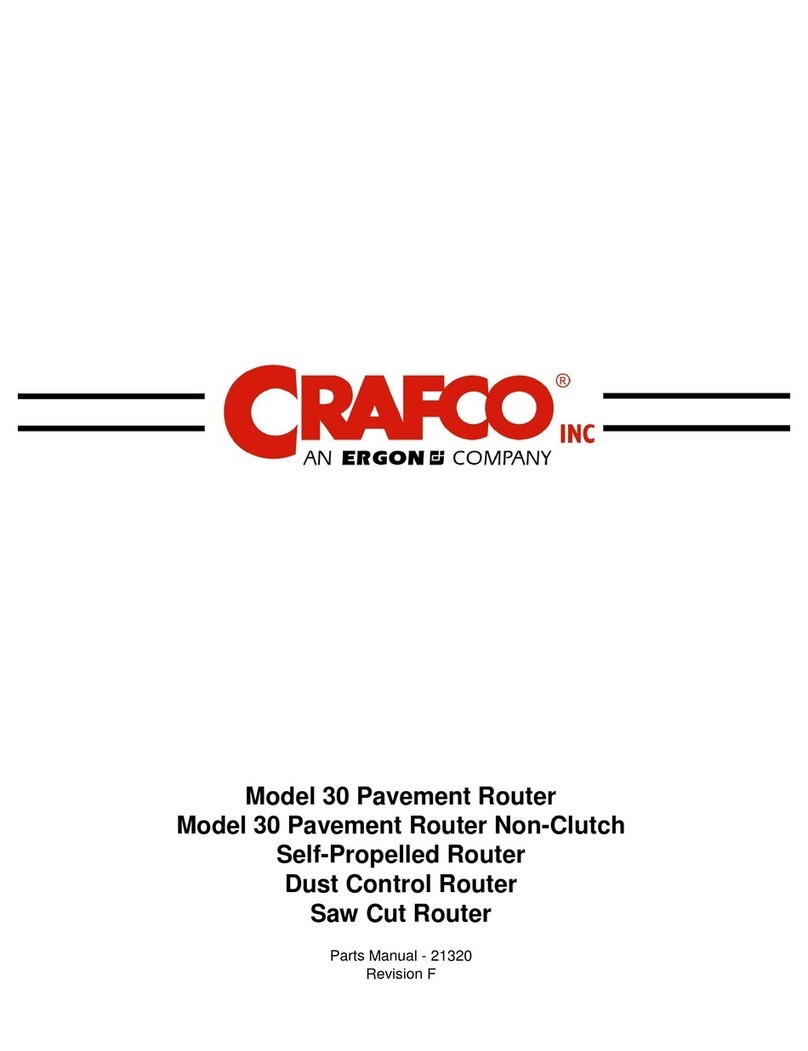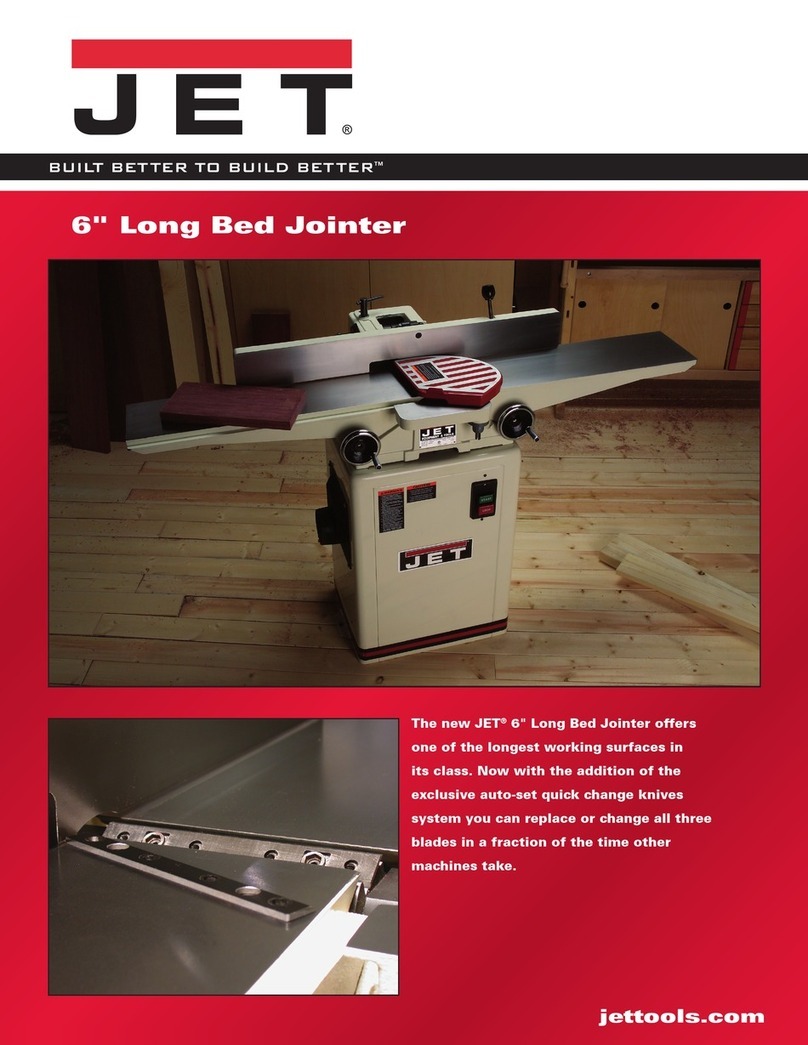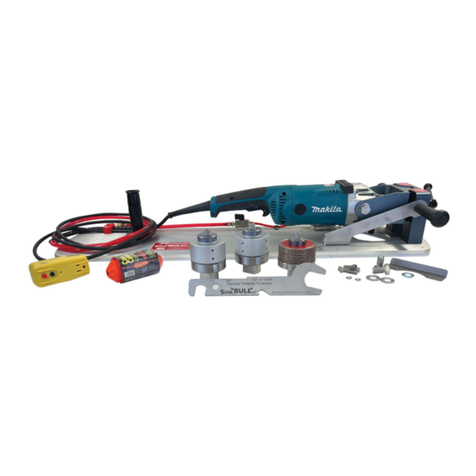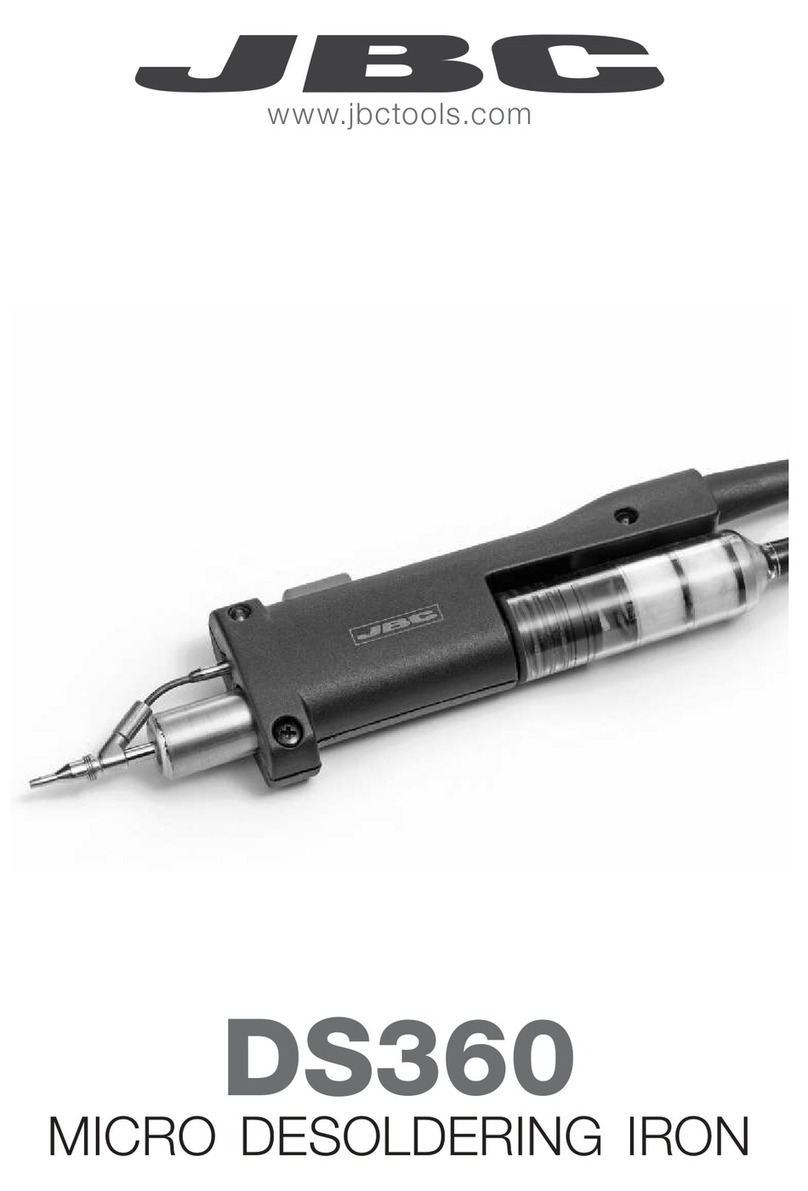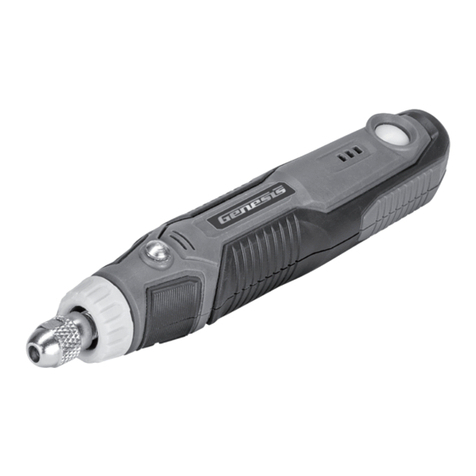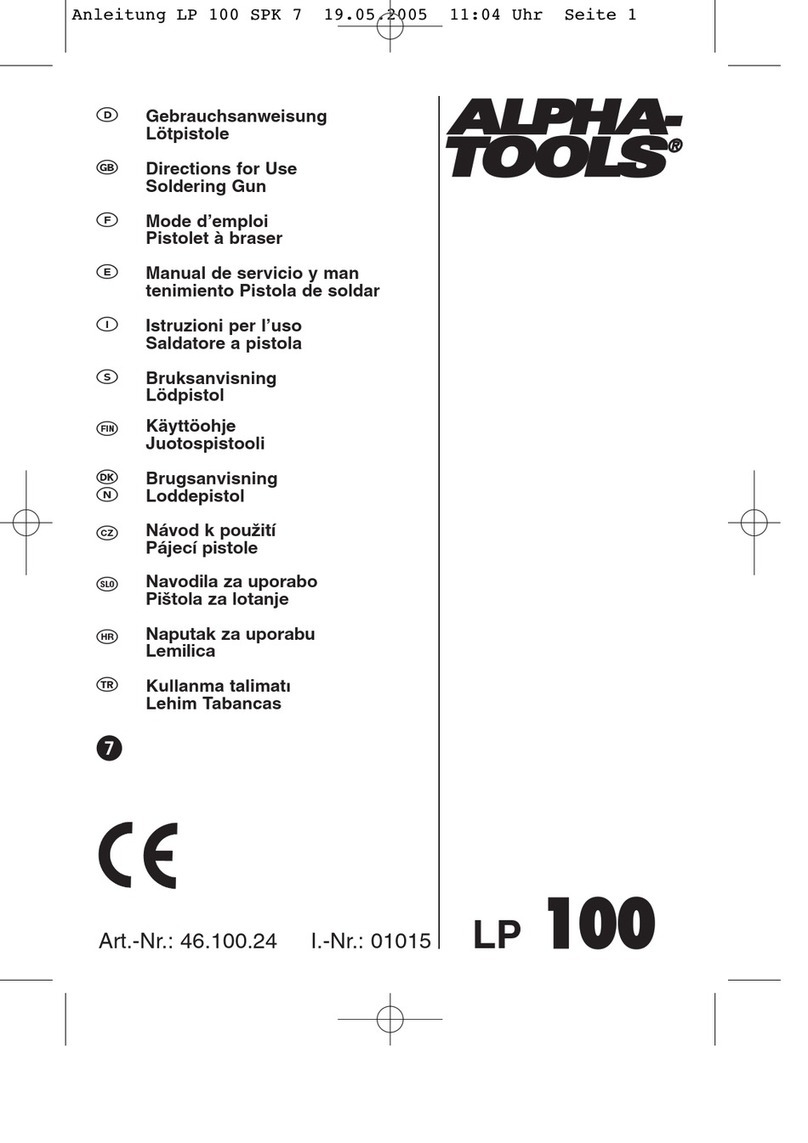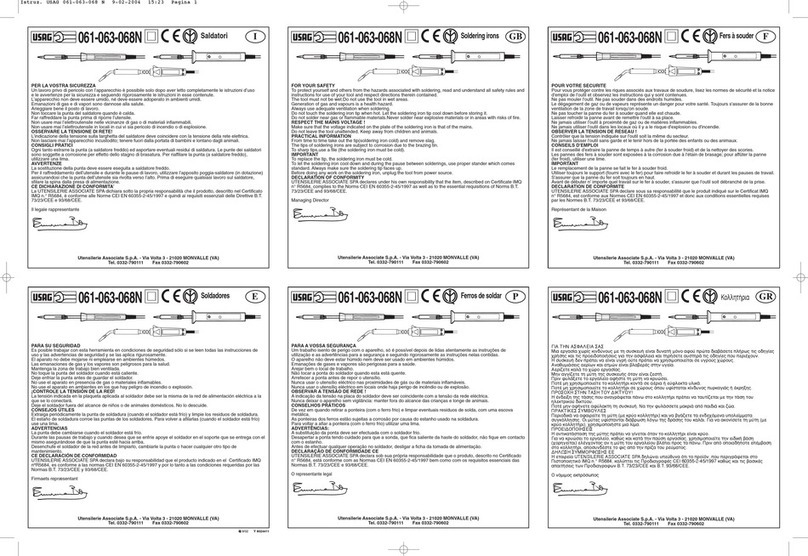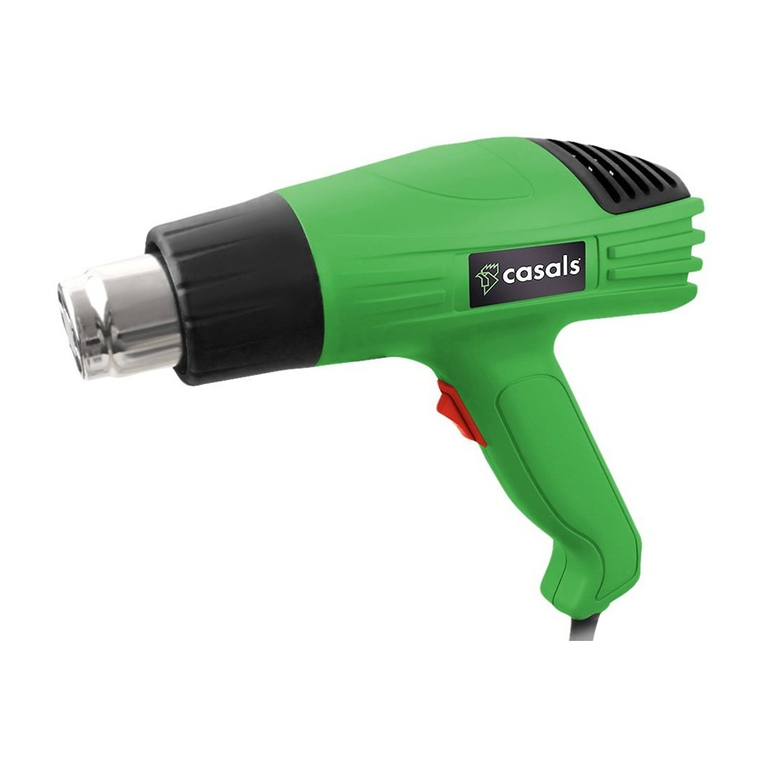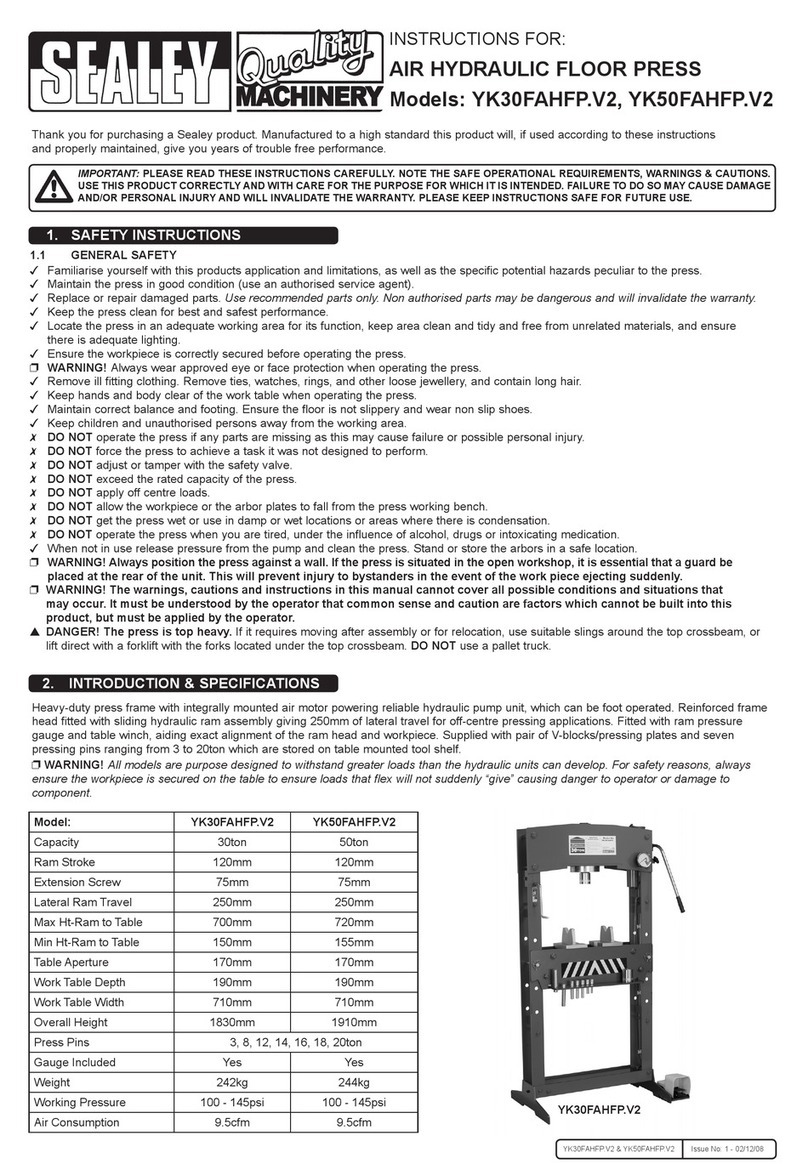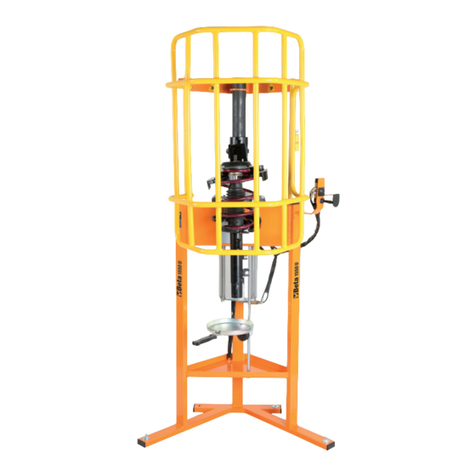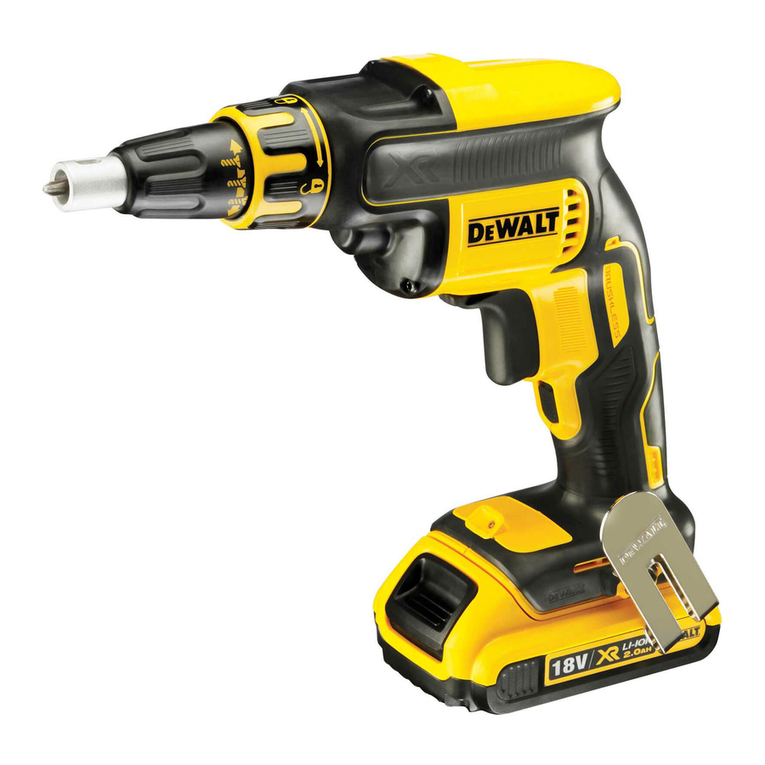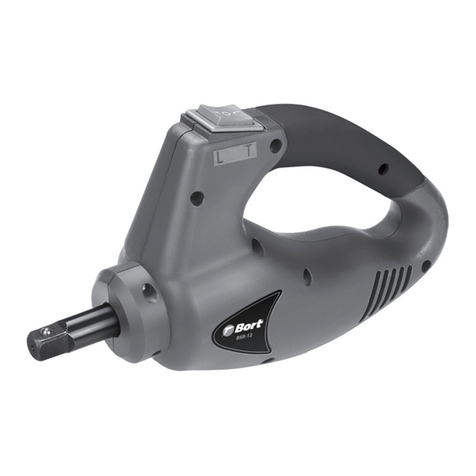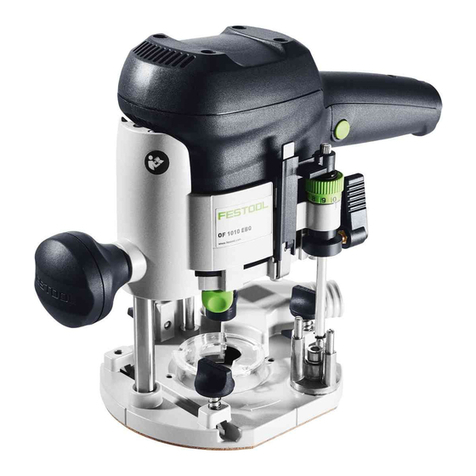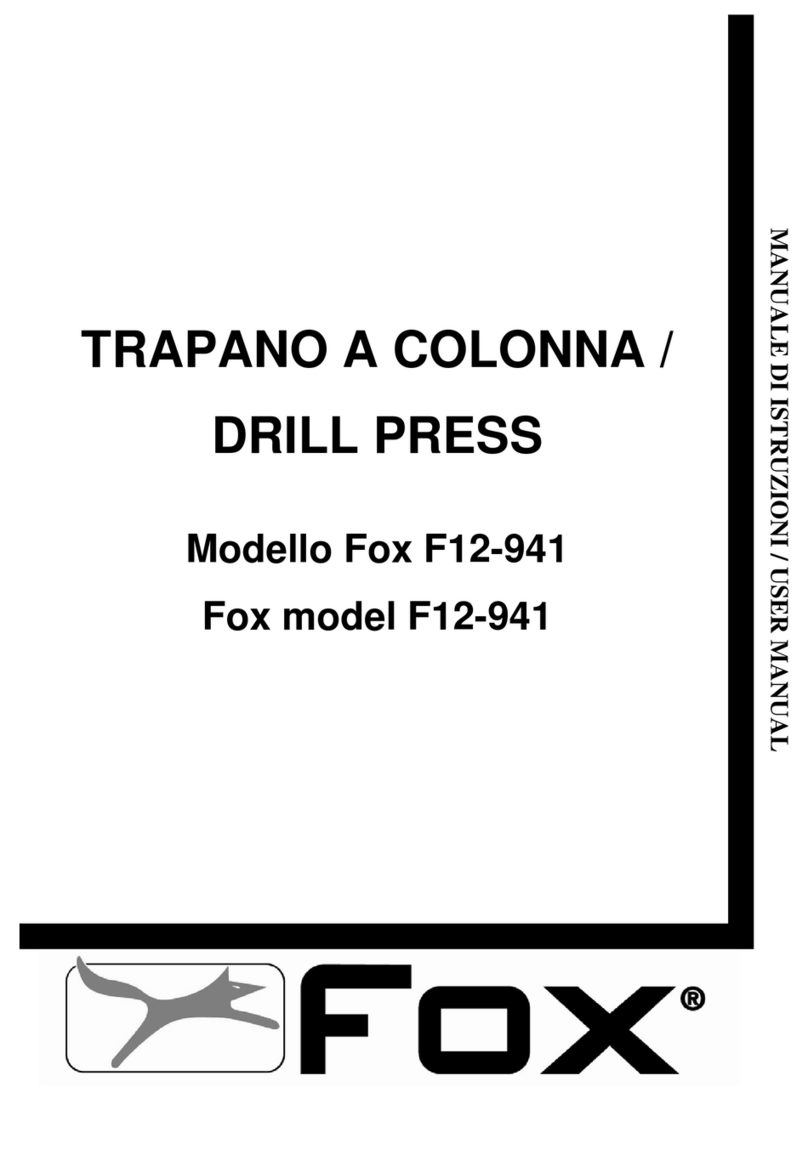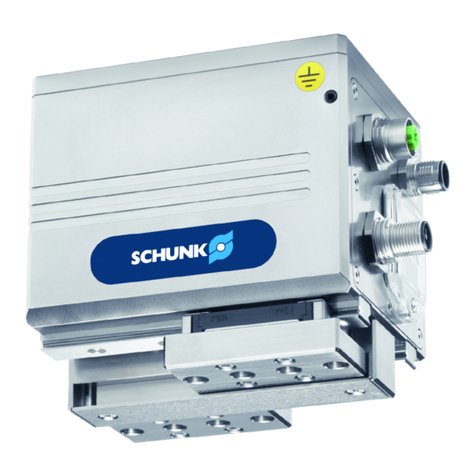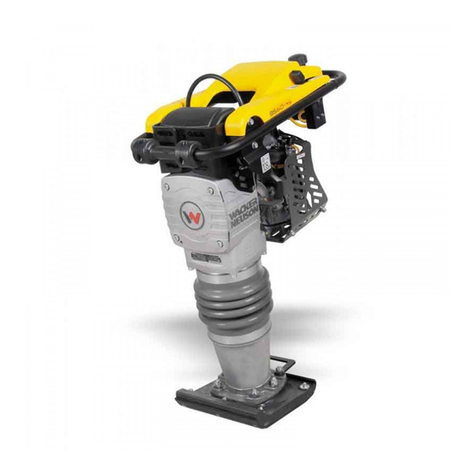GRABBER GTT150HD Quick start guide

Li-ion Gas Tool
OPERATIONAL MANUAL
CONCRETE GAS TOOL

2
C. Battery Light Indicator
LED Battery Level
All LEDs 100%
1 Green and 1 Red LED 50%
1 Red LED 25%
NOTE:
• After using the tool, remove the battery from the tool to
prevent the tool from being red.
D. Preparing the fuel cell
Caution !
• Never attempt to use fuel cell from other manufacturer.
• Do not remove the cap when it is unused.
• Never drill a hole on the fuel cell.
• Do not inhale the gas. Breathing in the gas could cause
sleepiness, dizziness or nausea.
• The fuel cell is not rellable, do not attempt to rell the gas.
Steps:
First ensure to use the corect colour valve, Please refer to the technical
specications.
1. Detach the cap, attach the valve by pushing in the front edge.
2. Pushing the rear edge until it has “clicked”.
NOTE:
• Make sure the fuel cell valve is attached rmly, if not, gas
leakage may occur and create hazards to users and bystanders.
1 - OPERATIONS
A. Charging
Steps:
1. Plug the battery charger into the proper AC voltage source, green
light will be ashing.
2. Insert the battery into charger, red light will alight indicating the
battery is charging.
3. It takes about 60 minutes for charging.
4. When fully charged, green light will remain alight.
5. After charging, unplug the charger from the power source.
• If orange light is blinking, remove the battery cartridge and
plug again.
• If this happens continuously, the battery cartridge or charger
may be damaged. Consult authorized serviceman for
replacement of new battery cartridge.
NOTE:
• Never attempt to open the charger or battery cartridge.
• The battery charger is for charging specic battery pack. Never
attempt to charge battery pack from other manufacturer’s
battery cartridge. Unsuitable battery cartridges may cause re
that causes injury.
• When the battery charger is being used, keep out of direct
sunlight.
• To get better cooling effect, keep the exhaust area clean.
B. Installing and removing the battery
Steps:
1. Empty fasteners from the magazine and make sure the trigger is
not pulled while installing the battery.
2. To install the battery, insert the battery cartridge until hearing
a “click”.
3. To remove the battery, grip the buttons on both side of battery
cartridge and pull out.

3
E. Installing/Removing fuel cell
Caution !
• Make sure the trigger is not held while inserting fuel cell.
• Empty fasteners in the magazine before installing fuel cell.
• Do not press on the surface ground while installing.
Steps:
1. Push up and pull to open the fuel door.
2. Insert the fuel cell, direct the jet nozzle into the adaptor.
3. Put the can door over the valve and push it down to latch.
4. For removing fuel cell, reverse the above steps.
F. Loading/Unloading the pins
Caution !
• Make sure the trigger is not held while loading the pins.
• Do not press on the surface ground while loading.
Steps:
1. Load the pins into the slit in the rear of the magazine until they
reach in front of the nail stopper.
2. Pull the follower holder to the bottom of the magazine and
release gently.
3. For removing the pins, pull the follower to the bottom and allow
the nails to slide to the nail stopper.
4. Press the nail stopper behind the channel and remove the pins
from magazine channel.
G. Driving the pins
Caution !
• Please READ and UNDERSTAND the section “General Safety
Instructions” for personal and working environment safety.
• If you spot of any abnormality about the tool, contact nearest
authorized serviceman for inspection and repairing.
Steps:
1. Press the Nose of the contact arm against working surface
(90° against the surface) rmly until you hear the fan motor
is working.
2. Pull the trigger, the pins are driven to the object.
3. Release the trigger and lift the tool.
H. Cleaning jam
Jamming of pins could be evident if users cannot drive the fasteners
properly, try following steps in subsequent order.
Caution !
• Place the tool on a at surface prior to releasing the magazine,
magazine may pop off suddenly.
• Read previous sections to fully understand battery cartridge
installation/removal and unloading fasteners.

4
Steps:
1. Remove the pins, fuel cell and battery from tool.
2. Pull the knob and rotate clockwise to release magazine channel.
3. Clean any residue along the driving path in the nose piece and
pin guide.
4. To install the magazine, rst engage the magazine in the slot of
the nose piece.
5. Push the connecting plate into the handle until it “clicks”.
NOTE:
• Do not release the magazine with fasteners inside. The follower
may pop the pins out and cause injury.
• Wear safety goggles, the jammed fastener may jump out and
hurt the user.
I. Adjust the driving depth
Caution !
• Please READ and UNDERSTAND the section 1 “General Safety
Instructions” for personal and working environment safety.
• Never press the pin guide by bare hand or by any parts of the
body.
• Never point the tools at anybody.
• Only pull the pin guide to separate the pin lock
Steps:
1. Remove the pins, fuel cell and battery attached on the tool.
2. Adjust the knob clockwise to increase the driving depth, or
vice versa.
J. Cleaning Filter
The lter at the back of the tool acts crucially to suck in air into the
chamber. For maintaining the best performance of the tool users
should always keep it clean.
1. Unscrew the socket screw on the lter.
2. Take out the lter and clean the mesh with brush or air.
3. Put the lter on the machine and fasten with the socket screw.
NOTE:
• Do not attempt to use water to clean the mesh. The cover and
mesh must be dry when operating the tool. If wet it may easily
cause malfunction to the tool.
K. Regular Maintenance
Grabber Construction Products gas tool allows user to perform regular
maintenance easily. It helps maximizing the performance and
durability of the tool.
1. Unscrew 4 socket screws and remove the head cover.
2. Pivoting the cylinder head.
3. Now you can perform cleaning for crucial parts including spark,
fan blade, cylinder with decarbonizer spray.
4. Wipe them clean completely, lubricate and reassemble.

5
2 - TROUBLESHOOTING
WARNING:
To reduce the risk of serious personal injury,
ALWAYS unload the battery, the pins and
fuel cell from the tool before all repairs.
A. Battery/Charger Problems
SYMPTOM 1
Battery Cell does not appear to accept charge. Green charger light
does not come on after several hours.
Possible reasons Services
Inoperative indicator
lights on charger.
Try Battery in tool after 1 hour on
charge cycle. If tool functions properly
charger lights are not working
correctly. Replace charger, or
monitor time to ensure Battery Cell
has adequate time for recharging. It’s
normal for Battery to feel warm after
properly charging.
Damaged charger.
Discontinue use immediately and
unplug from power source. Replace
charger and tag or dispose of charger
to prevent accidental reuse or
connection to power source.
SYMPTOM 2
Red LED on charger is blinking.
Possible reasons Services
Battery is hot.
Remove battery from charger and
allow to cool. Inspect battery charger
and cartridge.
SYMPTOM 3
Orange LED on charger is blinking.
Possible reasons Services
Charger damaged. Replace Charger.
B. Normal Stage of Operation
SYMPTOM 1
Fan does not run.
Possible reasons Services
Battery is not charged.
Charge Battery
according to
Operating Manual.
Battery
Terminals or Handle
battery contacts are oily,
dirty, or corroded.
Clean Battery Cell terminals Clean
Handle Battery Cell contacts as
required.
There is electrical short
somewhere.
The tool must be looked into by
Authorized Serviceman.
SYMPTOM 2
Fan does not run, or runs slower than normal.
Possible reasons Services
Battery is discharged. Charge Battery Cartridge.
SYMPTOM 3
Fan runs intermittently.
Possible reasons Services
Battery is loose or
contacts are bent.
Snap battery back into its locked
position. Bend contacts back into
proper position by Authorized
Serviceman.

6
C. Pre-Combustion/Combustion Stage of
Operation
SYMPTOM 1
Contact Arm does not depress fully, tool does not operate.
Possible reasons Services
Lockout Bar is stuck in
lockout position.
Check if there is not enough pins in
the channel, load extra pins according
to Operating Manual.
The nose piece is bent,
or the channel is stuck
with dirt.
Inspect if the nose piece and channel
is clean. If it is damaged, consult
authorized serviceman for repair and
replacement of the parts.
Follower holder
positions wrongly at the
top of the magazine
strip.
Slide the follower holder to the bottom
and release gently.
Cylinder head O-Ring
pinched.
Contact authorized serviceman
for repair.
Jammed
fasteners. Clear jam according to User Manual.
SYMPTOM 2
Failure to install fasteners to nose piece.
Possible reasons Services
Piston positioned
wrongly.
Return piston to
original position
with a rod or screwdriver.
O-Ring is damaged and
causing leakage of gas.
Contact authorized serviceman
for repair.
Damaged valve plate
or reed of the cylinder
body.
Contact authorized serviceman for
repair.
SYMPTOM 3
Tool will not cycle - fan runs.
Possible reasons Services
Fuel Cell is empty. Replace Fuel Cell.
Spark does not occur. Contact authorized serviceman
for repair.
SYMPTOM 4
Fail to drive fasteners.
Possible reasons Services
Water vapour surround-
ing spark causing short
circuit.
Dry the spark area or contact
authorized serviceman for repair.
Sealing ring damaged. Contact authorized serviceman for
repair.
Piston guide stuck
with dirts.
Contact authorized serviceman for
repair.
D. Power/Exhaust Stage of Operation
SYMPTOM 1
Tool operates properly, but fasteners do not drive fully.
Possible reasons Services
Battery is discharged. Charge battery.
Fuel Cell is low.
Replace fuel cell
according to
User Manual

7
SYMPTOM 2
Tool operates, but no fastener is driven.
Possible reasons Services
Fastener strip may be
binding.
Use only fasteners meeting
designated specications.
Follower holding
wrong at the top of the
pin strip.
Slide follower holder gently to the
bottom and release to reset the pin
strip in the
magazine.
Jammed fasteners Clear jam according to User Manual.
SYMPTOM 3
Operation of the tool is not stable.
Possible reasons Services
Fuel Cell is low. Replace fuel cell according to User
Manual.
Spark Plug wire is loose. Contact authorized serviceman for
repair.
Filter element is
dirty, causing tool to
overheat.
Remove lter
element and clean according to User
Manual.
Tool sleeve or O-Rings
are dirty.
Contact authorized serviceman for
repair.
SYMPTOM 4
Unstable performance.
Possible reasons Services
Built-up dirt and debris
inside cylinder
Contact authorized serviceman for
repair.
SYMPTOM 5
Diminishing power.
Possible reasons Services
Damaged piston or
cylinder.
Contact authorized serviceman for
repair.
E. Returning/Purging Stage of Operation
SYMPTOM 1
Tool operated and drove fastener, but piston did not return to up
position.
Possible reasons Services
Mushrooming of
Piston Tip.
Contact authorized serviceman
for repair.
Exhaust ports on the
sleeve are dirty or
clogged
Contact authorized serviceman
for repair.
Tool (Sleeve) or O-Rings
are dirty.
Contact authorized serviceman
for repair.
SYMPTOM 2
Combustion Chamber does not drop after tool cycles.
Possible reasons Services
Contact arm is bent, or
tool is dirty.
Clean tool or replace contact arm
as require

8
3 - COPYRIGHT
Copyright:
Grabber Construction Products
5255 W 11000 N, STE 100
HIGHLAND, UT 84003
United States
Passing on and duplication of this document, exploitation and
disclosure of its contents are forbidden unless expressly approved.
Violations render the offender liable to damages. All rights reserved
for the event of patent, utility model or registered design applications.
This operating manual has been drawn up with the greatest care.
Nevertheless, Grabber Construction Products assumes no liability for
possible errors in this operating manual and their consequences.
Furthermore, no liability is assumed for direct or consequential
damages resulting from the improper use of the tool.
The national safety and occupational safety regulations and the safety
precautions given in this operating manual must be observed when
using the tool. All product designations and brand names are the
property of their owners and are not explicitly marked as such.
Amendments to content reserved.
4 - DISPOSAL
Separate collection. Local regulations may
provide for separate collection of electrical
products from the household, at municipal
waste sites or by the retailer when you
purchase the new product.
Separate collection of packaging and
failed rechargeable battery in accordance
with the recycling regulations applicable in
your country.
5255 W 11000 N, STE 100
HIGHLAND, UT 84003
Tel: 800-477-8876
Web: www.grabberpro.com
This manual suits for next models
1
Table of contents

